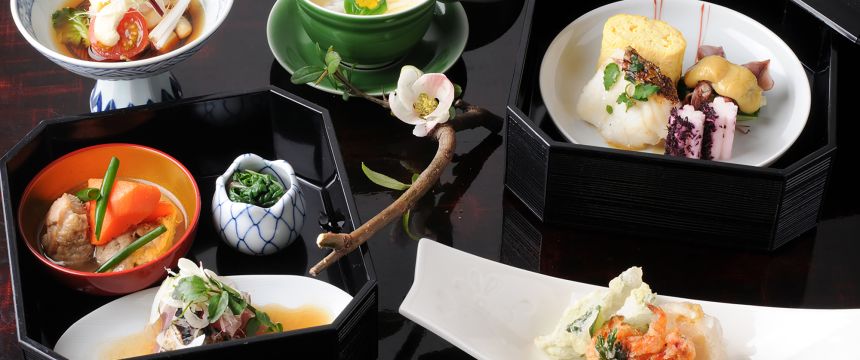Aso and Ubuyama, Aso-Kuju National Park, Kumamoto Prefecture - Kyushu
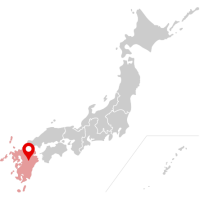
Voyage to the south of Japan to Aso-Kuju National Park in the heart of Kyushu, where cattle graze on vast grasslands, shrines sit solemnly beneath towering trees, and volcanoes quietly simmer with their steam and smoke rising into the air. The mountainous park, which stretches across the prefectures of Kumamoto and Oita, is best known for the Aso caldera, one of the largest in the world. But the caldera with its five volcanic peaks is not all that brings distinction to this park.
Munching on grass while roaming across meadows, cattle called Akaushi dot the grasslands that spread out from the base of the mountains. The cattle, known as Japanese Brown in English, are one of only four official breeds of Japan’s famous wagyu (Japanese beef), the others being Japanese Black, Japanese Polled, and Japanese Shorthorn. In the Aso area of Kumamoto Prefecture, steak, yakiniku (grilled meat), akagyudon (steak over rice) and other dishes with Akaushi as the centerpiece are a treat to enjoy. Travel to Kumamoto and delight in the prefecture’s wagyu delicacies while you discover the magnificence of Aso-Kuju National Park.
Exceptional Beef in an Extraordinary Location
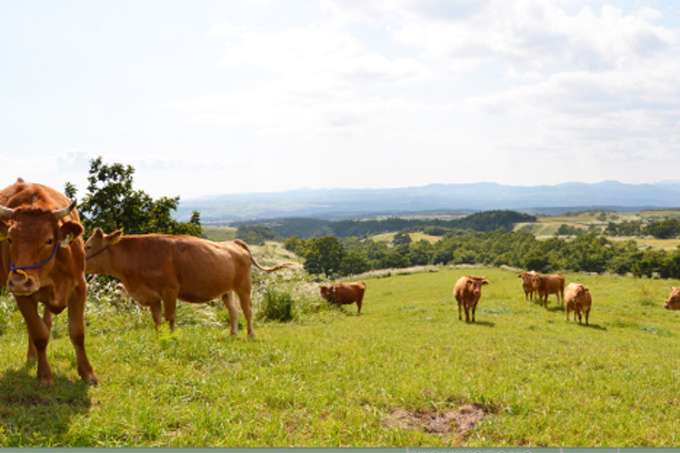
The relationship between the Akaushi and Aso-Kuju National Park is symbiotic. The grasses and the vastness of the pastureland in the park provide nutrients the cattle need to grow and room for them to roam. For their part, the cattle, which graze and wander in the pasture, help the grasslands stay in good condition by keeping the grass short and the soil healthy.
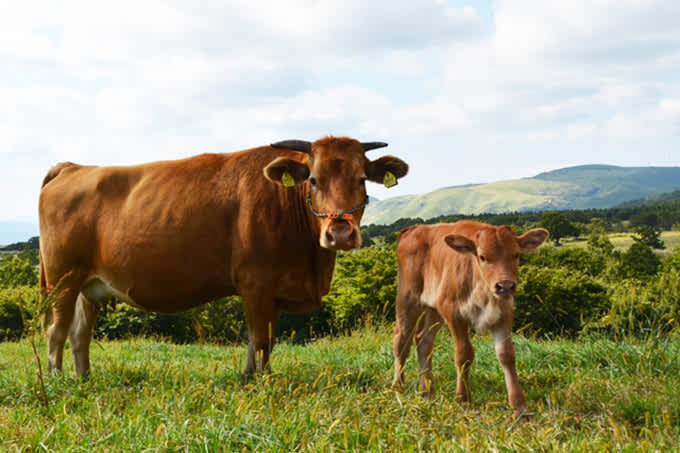
The cattle are an essential part of this ecosystem and have indeed been part of it for generations. The grasslands are said to have been maintained in much the same way for one thousand years, while the present-day Akaushi of the Kumamoto region are the descendants of a cross between an endemic species and Simmental cattle from Switzerland.
Unbelievably Tender Yet Surprisingly Low in Fat
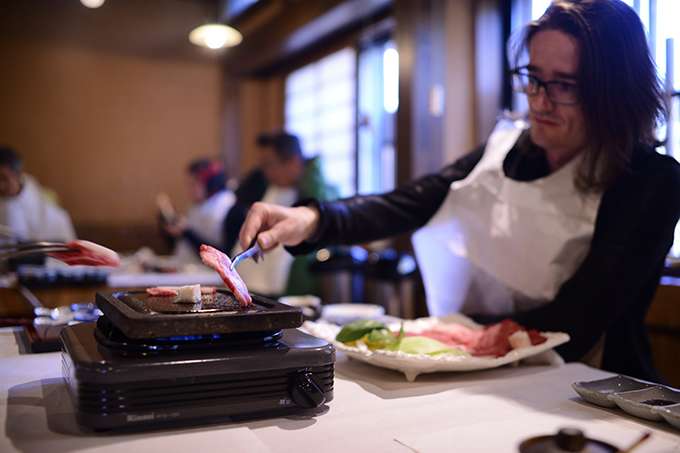
For the first eight to ten months of their lives, Akaushi calves are raised on a nutritious diet provided by the national park’s low uplands—both the grass they graze on and the milk their mothers provide, which is itself a product of the grasslands.
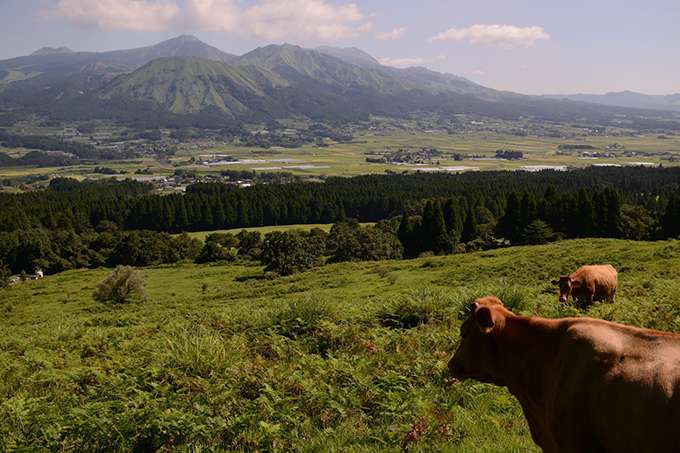
From the cow-calf operations where they were born, calves move on to feeding operations. The move doesn’t spell the end of a comfortable life, however; calves are eased into their new environment and onto a new diet, with farmers going to great lengths to prevent calves and yearlings from experiencing stress. Until a yearling reaches roughly twenty-four months of age, the amount of rice straw and mixed feed that it receives is carefully managed for its age, and it is kept in a clean, pleasant barn.
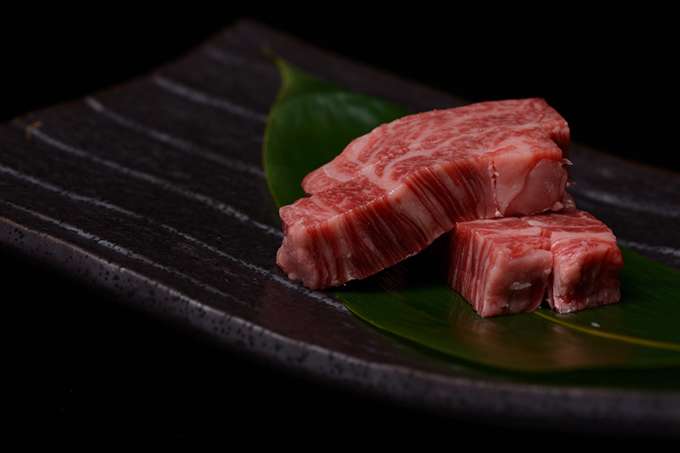
This open-range grazing and attentive care is the secret to the high-quality and lean yet tender meat that Akaushi are known for. Rich in protein with a good balance of minerals and a high taurine content, Akaushi beef is naturally healthy on top of being delectable.
Discover the Land That Nurtures Kumamoto’s Wagyu
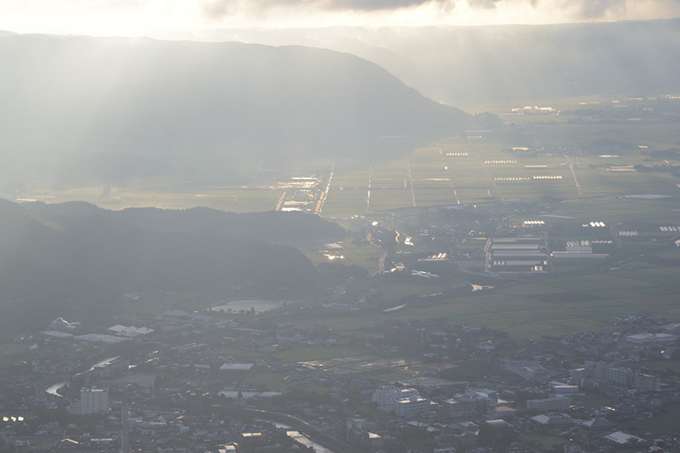
Milk Road winds through the grasslands of the outer rim of Mount Aso’s caldera, providing majestic views of Aso-Kuju National Park’s verdant rolling hills, cultivated fields, mountain peaks, and ridges. Travel its twists and turns as you journey through the park, and admire the vivid shades of green that stretch out before you.
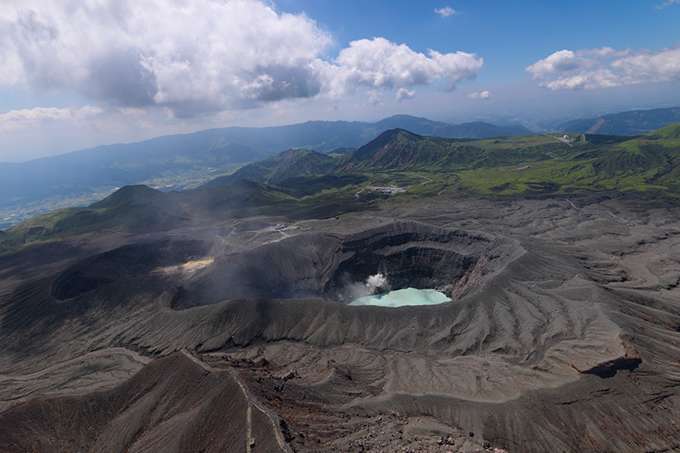
The five peaks in Mount Aso’s caldera—including the active Mt. Nakadake with its fuming crater filled with acidic blue water—lie in the southern regions of the park, while the Kuju mountain range extends through the park’s central area and into the north.
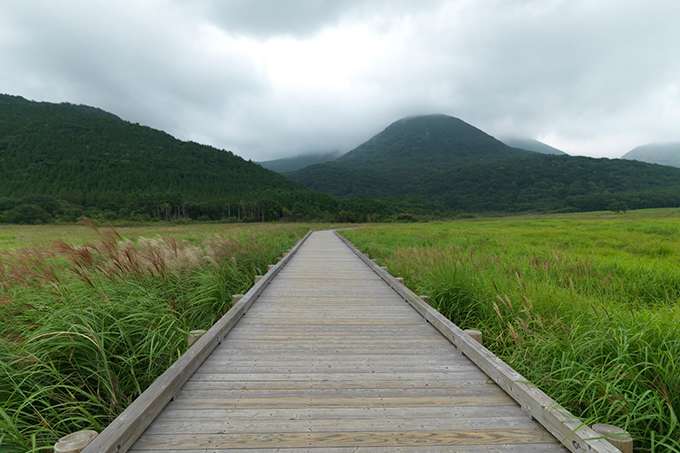
Around the Kuju mountain range, the grasslands of the Kuju, Handa, and Chojabaru plateaus add an emerald hue to the scenery in summertime, as do the Tadewara and the Bogatsuru marshlands. Both are recognized as internationally important Ramsar wetlands, a grouping that advocates for the conservation and protection of these delicate natural environments. Admire the rare flora and fauna that are native to the area while hiking the trails that cut through the wetlands.
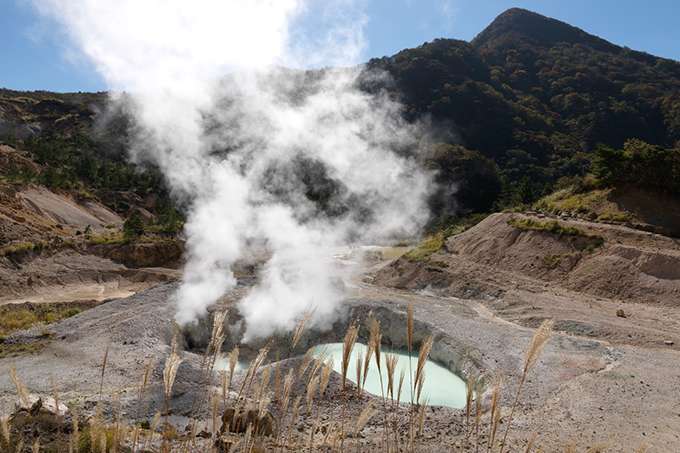
In contrast to the area’s flourishing plant life is its barren volcanic terrain where a shallow active volcanic crater can be seen. In this area, plant life is scarce, but the plants that do grow here have flair—Miyama Kirishima, a regional variety of azalea, turns the volcanic slopes bright pink in spring.
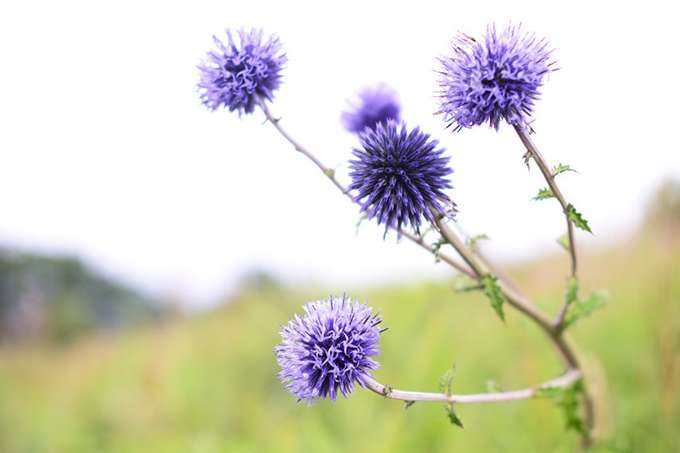
The unique ecology of the park supports a diversity of flora and fauna, including the thistle-like Echinops setifer and distinctive blue butterfly called orurishijimi.
The diversity of the landscape and features of the area support a wide variety of activities for visitors to enjoy—horseback riding, hiking, hot-air balloon rides, paragliding, outdoor yoga, rice-paddy kayaking, hot-spring bathing, and more. There is as much to do in Aso-Kuju National Park as there is to admire!
Savor the Flavor of Akaushi Surrounded by the Very Natural World Where It Was Raised
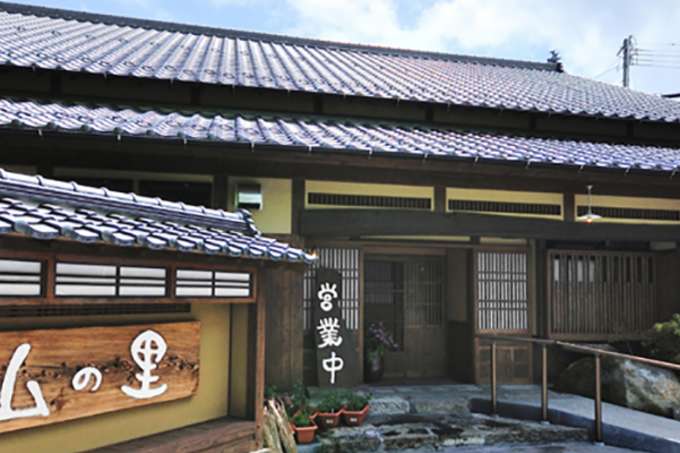
Nestled between the southern and northern regions of Aso-Kuju National Park and on the northeastern rim of the Aso caldera, the Tajiri neighborhood of the rural village of Ubuyama extends along the banks of the Tamarai River. In this idyllic setting, just outside the park itself you’ll find Yama no Sato, a family-run restaurant specializing in Akaushi.
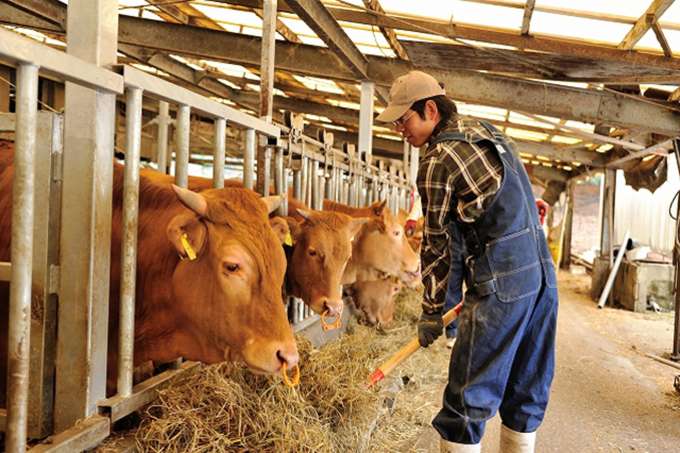
The beef served at the restaurant is from cattle raised on the family farm, while the rice and vegetables are all either homegrown or sourced from Ubuyama farms or the area’s satoyama (woodlands) from which the restaurant derives its name. Even the water used on the farm comes from the nearby Ikeyama springhead.
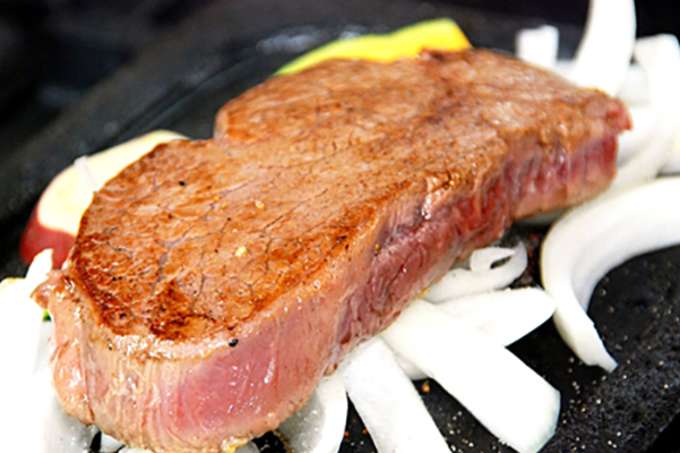
Enjoy a meal of steak or Japanese yakiniku (grilled meat), pickles made with seasonal ingredients, and delicious home-style side dishes. Relish the rich nuanced flavor of the Akaushi beef and its incredibly tender texture.
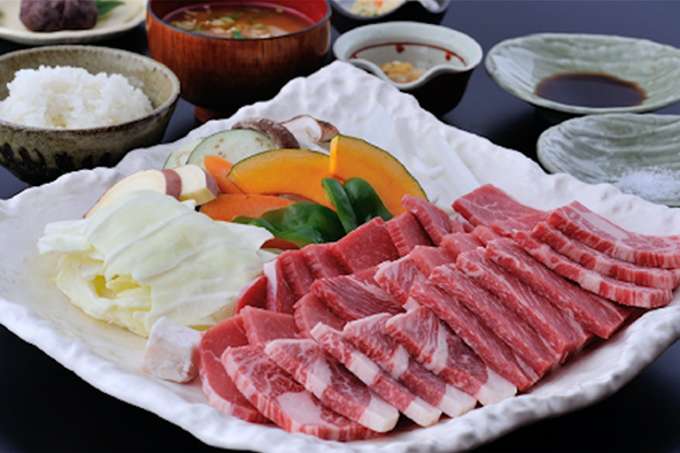
This is wagyu at its best, served in a restaurant surrounded by the beauty of one of Japan’s magnificent national parks.
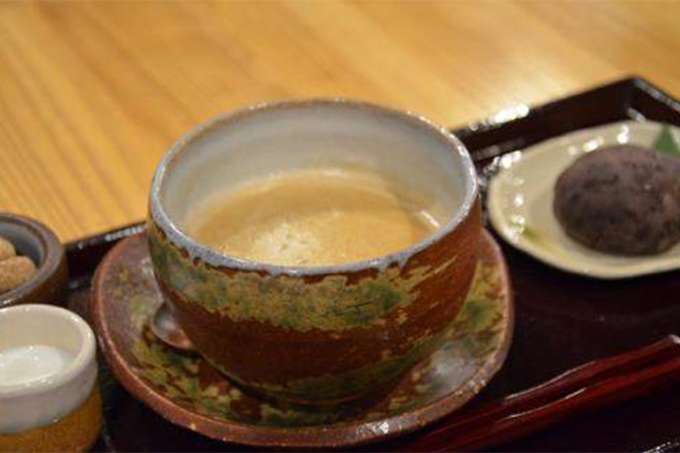
Finish with traditional ohagi—a combination of glutinous rice and azuki paste—as an after-dinner sweet. Add coffee made with spring water for an extra treat. The combination is the perfect finish to an exquisite meal.
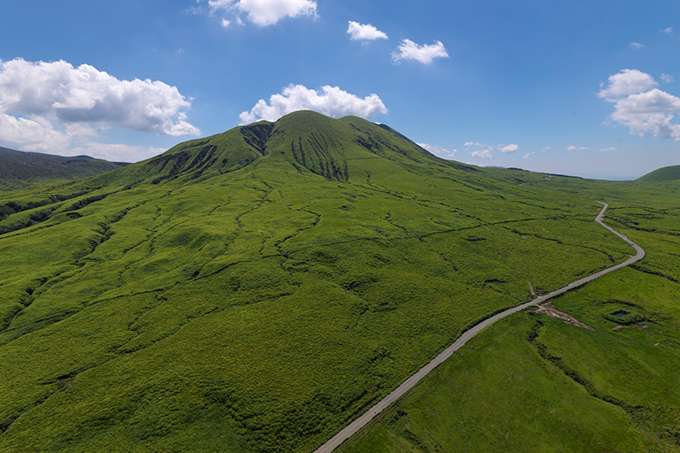
Aso-Kuju National Park astounds with stunningly beautiful, incredibly diverse landscapes. Travel across its vast grasslands, cultivated fields, and rice paddies; hike its volcanic terrain and marshlands; and marvel at all it has to offer. At some point during your travels, delight in the taste and texture of Akaushi, born and raised on this land and so essential to its continued prosperity. Aso-Kuju is a land of treasures—journey to Kumamoto to discover them all.
Contact Information
Aso-Kuju National Park (Park Maintenance Office)
1180 Kurogawa, Aso, Kumamoto 869-2225
Yama no Sato
202 Tajiri, Ubuyama, Aso District, Kumamoto 869-2704
How to Get There
Aso-Kuju National Park is located in central Kyushu and covers parts of Kumamoto Prefecture and Oita Prefecture. The closest airport is Aso Kumamoto Airport, which is served by direct flights from several domestic airports. The national park is best explored from Aso Station, which is approximately one hour and thirty minutes by bus, or about one hour by rental car or taxi. Yama no Sato is approximately thirty minutes from Aso Station by taxi. There are a comprehensive range of guided tours, hiking expeditions, and outdoor activities on offer once you are in the park.
Recommended Itineraries
Activities abound in Aso-Kuju National Park. Visit Aso Shrine to admire one of Japan’s oldest Shinto places of worship, or head into the woods and up 260 steps to Kamishikimi Kumano-imasu Shrine. After a day of exploration, go for a relaxing soak in the hot springs of Tsuetate Onsen or Kurokawa Onsen, both near Kumamoto Prefecture’s border with Oita Prefecture. Located between the two is the waterfall Nabegataki, a popular tourist spot where visitors can walk behind the twenty-meter-high waterfall to admire the surrounding lush wilderness through cascading water.
Related Links
Official Kumamoto Tourism Guide (English)
National Parks of Japan, Aso-Kuju National Park (English)
Map
Featured Cuisine
Akaushi, or Japanese Brown, is one of Japan’s four famous wagyu breeds. The cattle are raised on the vast grasslands of Aso-Kuju National Park, enjoying a nutritious diet of grass and plenty of room to frolic. The meat of Akaushi cattle is appreciated for its tender texture, rich umami flavor, and lack of excess fat. Of course, eating the meat within the environment where the animal was nurtured is the definitive experience, but Akaushi meat can be found on the menus of many luxury restaurants nationwide in Japan.
-
Author
Author: Helen
Helen hails from a small town in Central Canada. Shortly after completing an honors degree in history, a desire to study karate in its birthplace drew her to Japan. Since arriving in 2006, she has earned her second dan in Goju-ryu karate, fallen head-first into Japanese culture by way of cross-cultural marriage, and written about Japan for a variety of publications. She loves traveling by Shinkansen, curling up under a heated kotatsu blanket, and eating anything with mochi.
All information is correct as of the time of writing.
Please check for the latest information before you travel.




















































